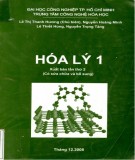
TÀI LIỆU THƯ VIỆN SỐ
- Toán học (546 )
- Vật lý (456 )
-
Hóa học
(373 )
- Sinh học (280 )
- Văn học (620 )
- Lịch sử (332 )
- Địa Lý - Thiên văn (306 )
- Ngoại ngữ (301 )
- Mỹ thuật - Hội họa (250 )
- Âm nhạc (355 )
- Thể dục (459 )
- Quản lý Giáo dục (453 )
- Tâm lý - Giáo dục (468 )
- Sư phạm Tiểu học (519 )
- Sư phạm Mầm non (608 )
- Kinh tế - Ngân Hàng (621 )
- Quản trị KD - Du lịch (533 )
- Công nghiệp (339 )
- Điện - Điện tử (681 )
- Công nghệ thông tin (921 )
- Thông tin - Thư viện (495 )
- Văn hóa - Nghệ thuật (305 )
- Khoa học thường thức (192 )
- Chính trị - Xã hội (393 )
- Nông nghiệp (777 )
- Luận văn (483 )
- Luận án tiến sĩ (121 )
Danh mục TaiLieu.VN
- Mẫu Slide Powerpoint
- Luận Văn - Báo Cáo (344720)
- Kinh Doanh Marketing (65512)
- Kinh Tế - Quản Lý (48934)
- Tài Chính - Ngân Hàng (55898)
- Công Nghệ Thông Tin (142209)
- Tiếng Anh - Ngoại Ngữ (47066)
- Kỹ Thuật - Công Nghệ (134345)
- Khoa Học Tự Nhiên (107174)
- Khoa Học Xã Hội (82451)
- Văn Hoá - Nghệ Thuật (54408)
- Y Tế - Sức Khoẻ (173915)
- Nông - Lâm - Ngư (62504)
- Kỹ Năng Mềm (29016)
- Biểu Mẫu - Văn Bản (27610)
- Giải Trí - Thư Giãn (51994)
- Văn Bản Luật (198854)
- Tài Liệu Phổ Thông (402015)
- Trắc Nghiệm Online (213578)
- Trắc Nghiệm MBTI
- Trắc Nghiệm Holland
Tài liệu nổi bật
Kết quả 49-60 trong khoảng 373
-
Đề thi kết thúc học phần Hóa học đại cương (HK I, năm học 2013-2014)
Đề thi kết thúc học phần Hóa học đại cương (HK I, năm học 2013-2014) sẽ giới thiệu tới các bạn 4 câu hỏi tự luận về điện tích hạt nhân; chu lì; cấu hình electron;... Hy vọng tài liệu là nguồn thông tin hữu ích cho quá trình ôn tập và làm bài thi của các bạn.
1 p dnulib 27/06/2019 299 1
-
Dưới đây là "Đề thi kết thúc học phần học kỳ 2 năm học 2014-2015 môn Hóa hữu cơ - Trường Đại học Duy Tân" đề số 1, mời các bạn và quý thầy cô giáo cùng tham khảo để để có thêm tài liệu phục vụ nhu cầu học tập và ôn thi. Chúc các bạn đạt kết quả cao trong kỳ thi sắp tới.
3 p dnulib 27/06/2019 345 1
-
Bài giảng Phân tích định lượng - Nguyễn Thị Hường
Mời các bạn cùng tìm hiểu phân tích khối lượng và đại cương về các phương pháp phân tích thể tích; phương pháp chuẩn độ axit-bazo; phương pháp chuẩn độ tạo phức; chuẩn độ oxit hóa khử;... được trình bày cụ thể trong "Bài giảng Phân tích định lượng" của giảng viên Nguyễn Thị Hường.
52 p dnulib 27/06/2019 283 1
-
Lecture Organic chemistry: Chapter 3 - L. G. Wade, Jr.
Chapter 3 - Structure and stereochemistry of alkanes. In this chapter you will learn: Draw and name the isomers of alkanes, and explain the trends in their physical properties; draw alkane conformations, compare their energies, and predict the most stable conformations; draw and name the isomers of cycloalkanes, and explain ring strain; draw the conformations of cycloalkanes, compare their energies, and predict the most stable conformations.
62 p dnulib 27/06/2019 154 1
-
Lecture Organic chemistry: Chapter 8 - L. G. Wade, Jr.
Chapter 8 - Reactions of Alkenes. This chapter include objectives: Explain why electrophilic additions are among the most common reactions of alkenes; Predict the products of the reactions of alkenes, including the orientation of the reaction (regiochemistry) and the stereochemistry; propose mechanisms to explain the observed products of alkene reactions; use retrosynthetic analysis to solve multistep synthesis problems with alkenes as...
69 p dnulib 27/06/2019 157 1
-
Lecture Organic chemistry: Chapter 6 - L. G. Wade, Jr.
Chapter 6 - Alkyl Halides: Nucleophilic Substitution and Elimination. In this chapter, we consider the properties and reactions of alkyl halides. After studying this chapter you will be able to: Name alkyl halides, explain their physical properties, and describe their common uses; predict the products of substitution and elimination reactions, and explain what factors favor each type of reaction;...
61 p dnulib 27/06/2019 185 1
-
Lecture Organic chemistry: Chapter 1 - L. G. Wade, Jr.
Chapter 1 introduction and review the organic chemistry. The goal is for you to learn: Review concepts from general chemistry that are essen-tial for success in organic chemistry, such as the electronic structure of the atom, Lewis structures and the octet rule, types of bonding, electronegativity, and formal charges; predict patterns of covalent and ionic bonding involving C, H, O, N, and the halogens. Identify resonancestabilized structures...
43 p dnulib 27/06/2019 267 1
-
Lecture Organic chemistry: Chapter 7 - L. G. Wade, Jr.
Chapter 7 - Structure and synthesis of Alkenes. The goal in this chapter: Draw and name alkenes and cycloalkenes; given a molecular formula, calculate the number of double bonds and rings; explain how the stability of alkenes depends on their structures; show how alkenes can be synthesized by eliminations from alkyl halides and alcohols.
46 p dnulib 27/06/2019 262 1
-
Lecture Organic chemistry: Chapter 2 - L. G. Wade, Jr.
Chapter 2 - Structure and properties of organic molecules. To understand these aspects of molecular structure we need to consider how the atomic orbitals on an atom mix to form hybrid atomic orbitals and how orbitals on different atoms combine to form molecular orbitals. In this chapter, we look more closely at how combinations of orbitals account for the shapes and properties we observe in organic molecules.
46 p dnulib 27/06/2019 228 1
-
Lecture Organic chemistry: Chapter 10 - L. G. Wade, Jr.
Alcohols are synthesized by a wide variety of methods, and the hydroxyl group may be converted to most other functional groups. For these reasons, alcohols are versatile synthetic intermediates. In this chapter, we discuss the physical properties of alcohols and summarize the methods used to synthesize them.
52 p dnulib 27/06/2019 126 1
-
Lecture Organic chemistry: Chapter 9 - L. G. Wade, Jr.
Chapter 9 introduce to Alkynes. In this chapter, students will be able to: Draw and name alkynes, cycloalkynes, and their derivatives; show how to synthesize alkynes by eliminations from alkyl halides and by the additions and substitutions of acetylide ions; predict the products of the reactions of alkynes, including the orientation of the reaction (regiochemistry) and the stereochemistry;...
46 p dnulib 27/06/2019 141 1
-
Lecture Organic chemistry: Chapter 4 - L. G. Wade, Jr.
Chapter 4 - The Study of chemical reactions. In this chapter, students will be able to: Propose mechanisms and explain the steps for simple reactions such as free-radical halogenation; draw a reaction-energy diagram, and use it to identify the factors controlling the thermodynamics and kinetics of a reaction; use the mechanism, thermodynamics, and kinetics of a reaction to predict which of several possible products is the major product;...
54 p dnulib 27/06/2019 139 1
Đăng nhập
BỘ SƯU TẬP NỔI BẬT





























